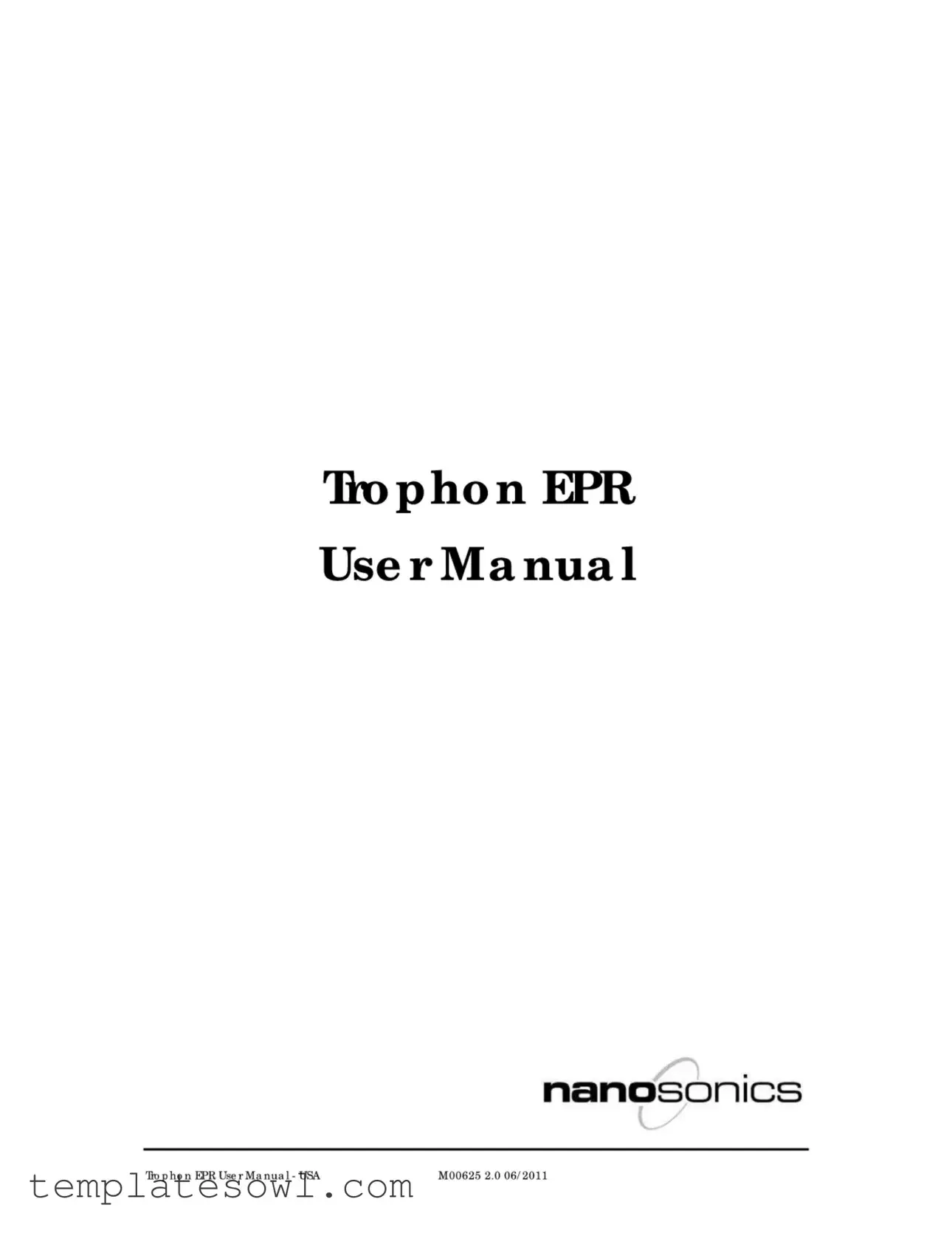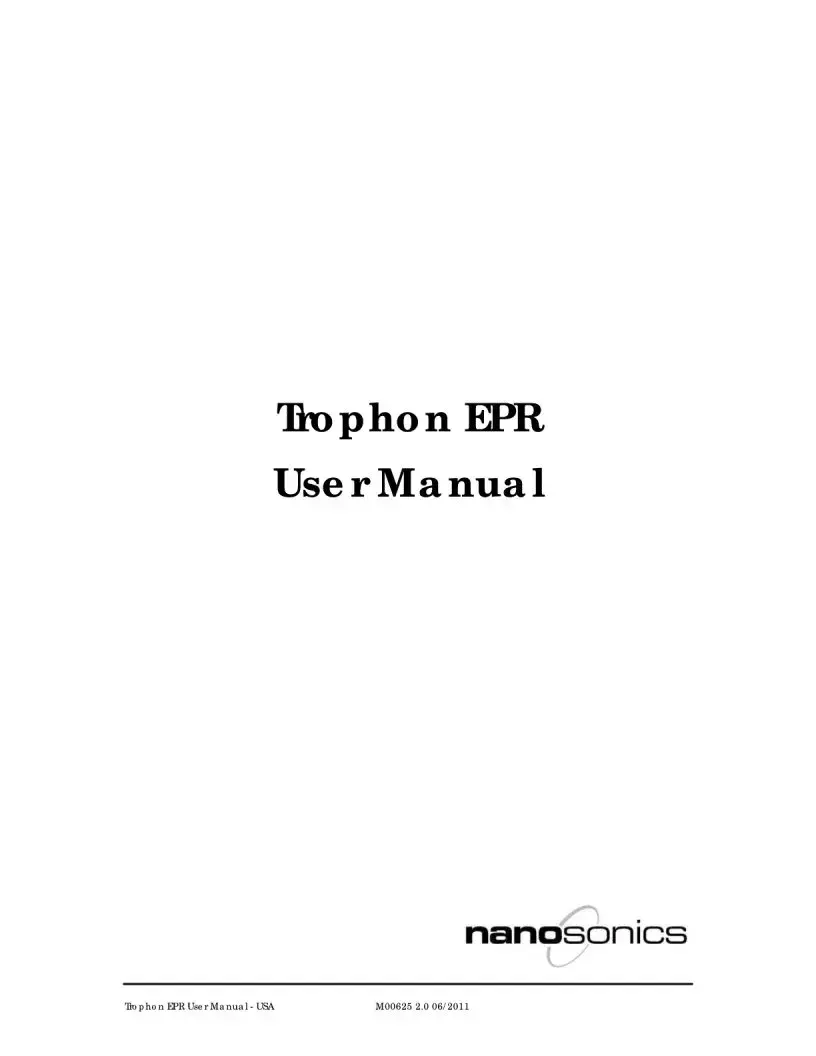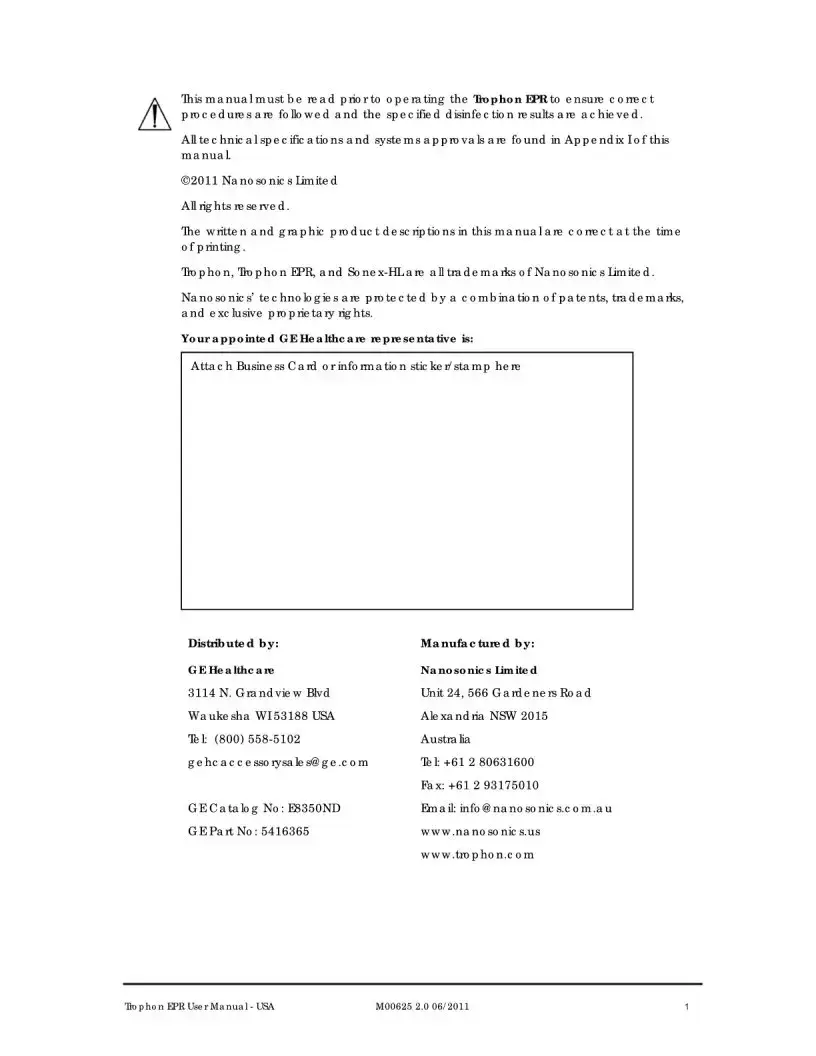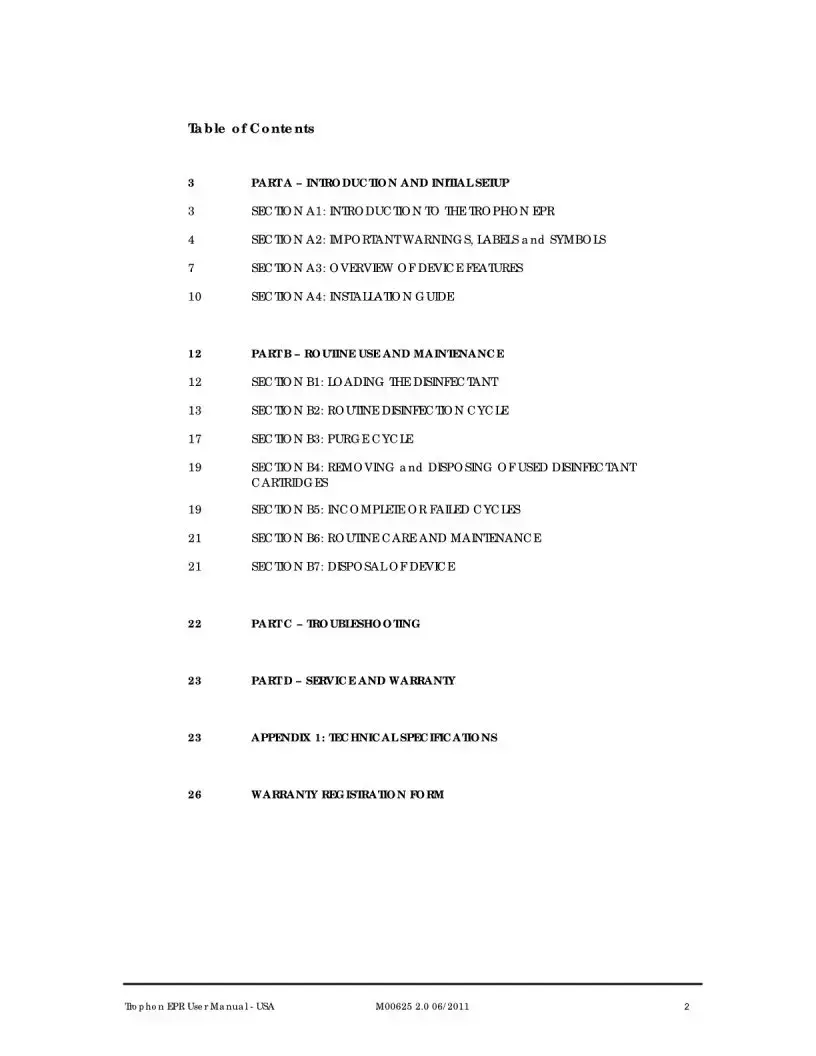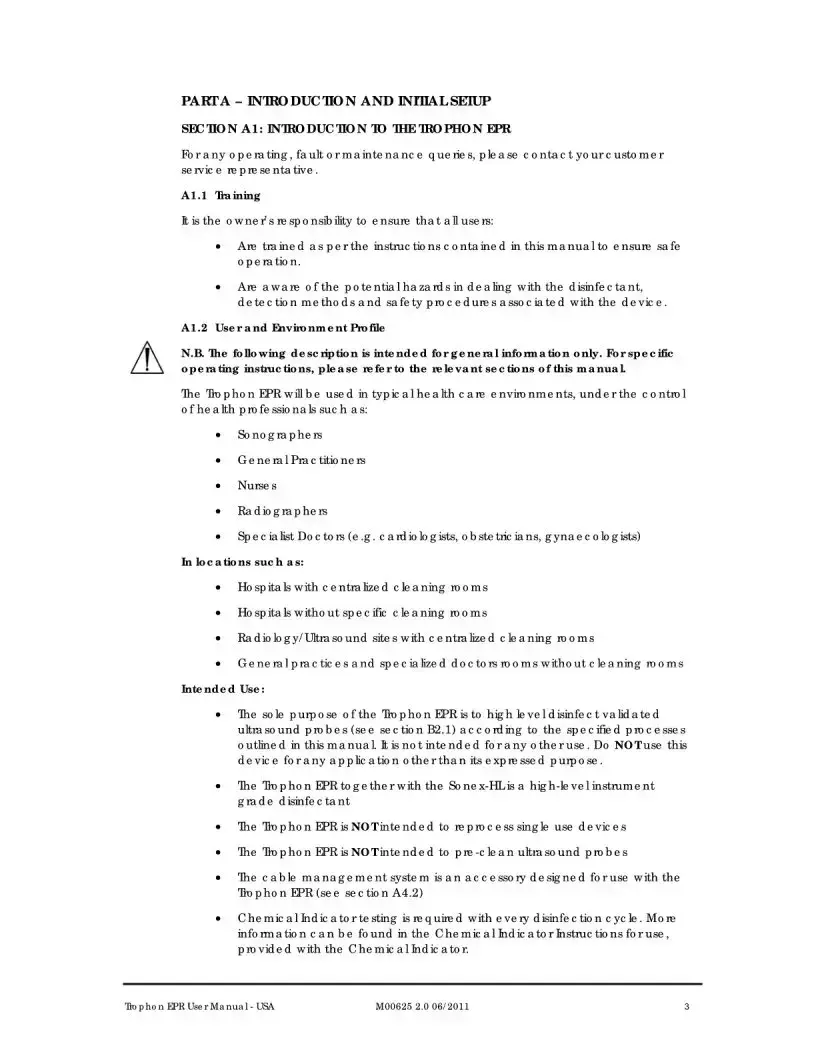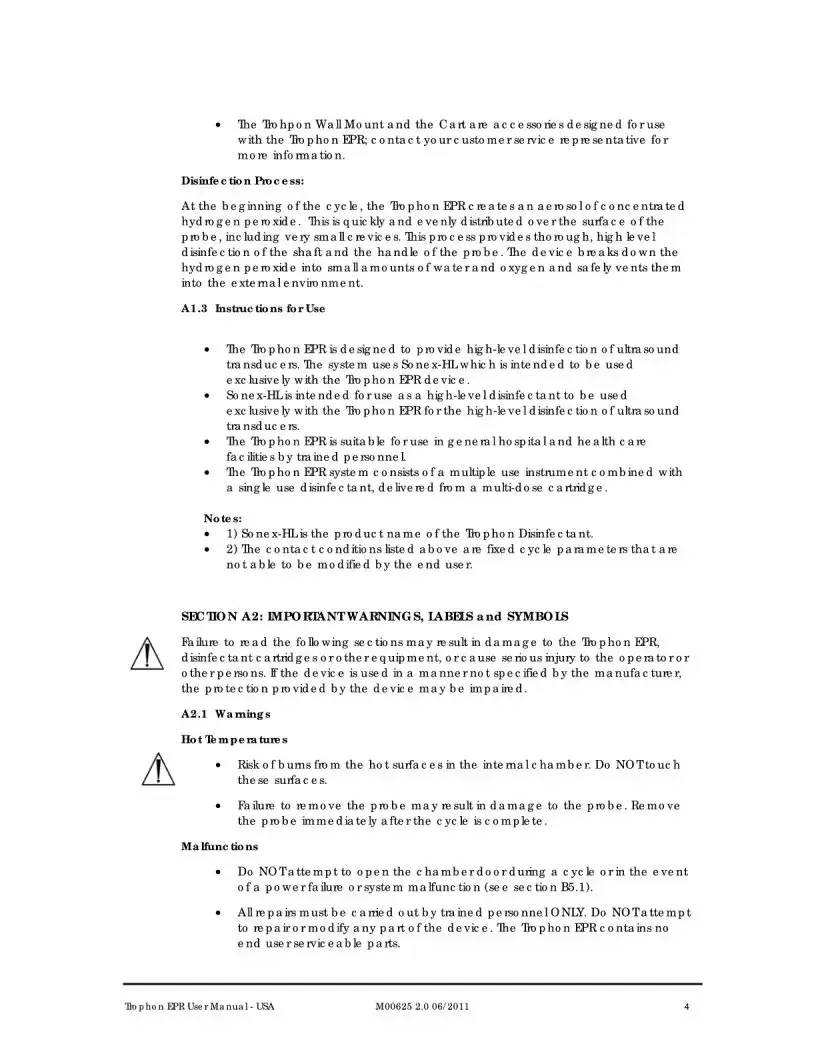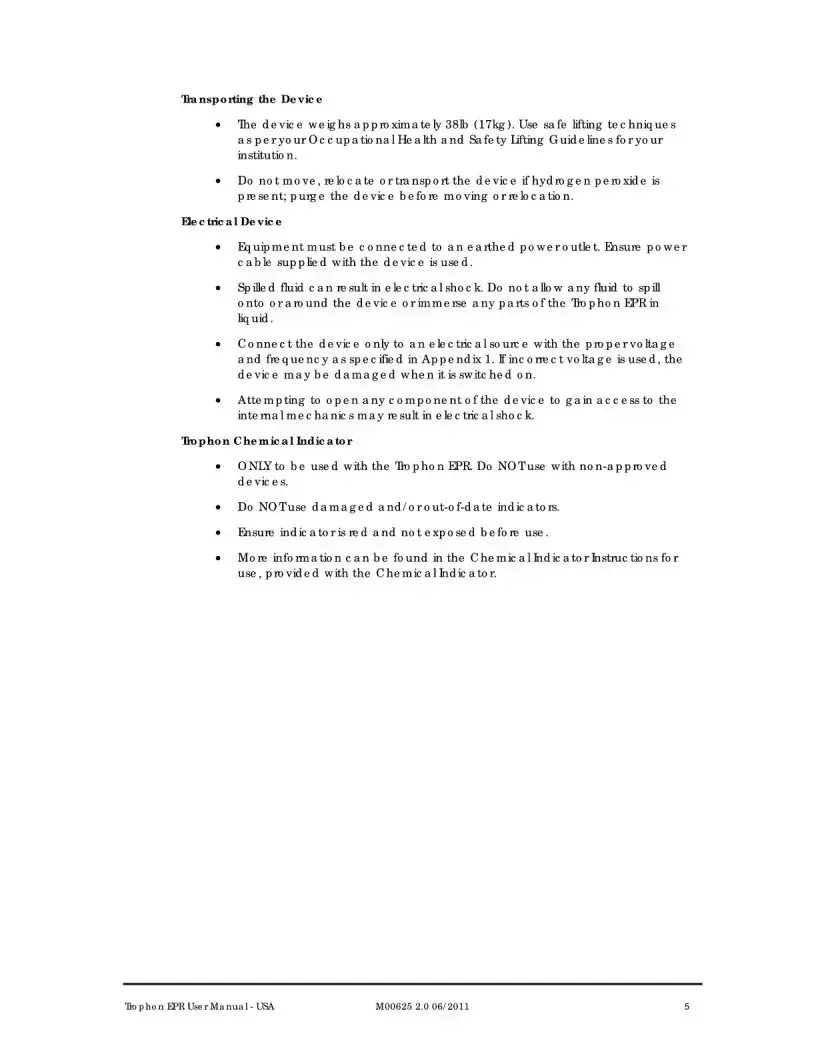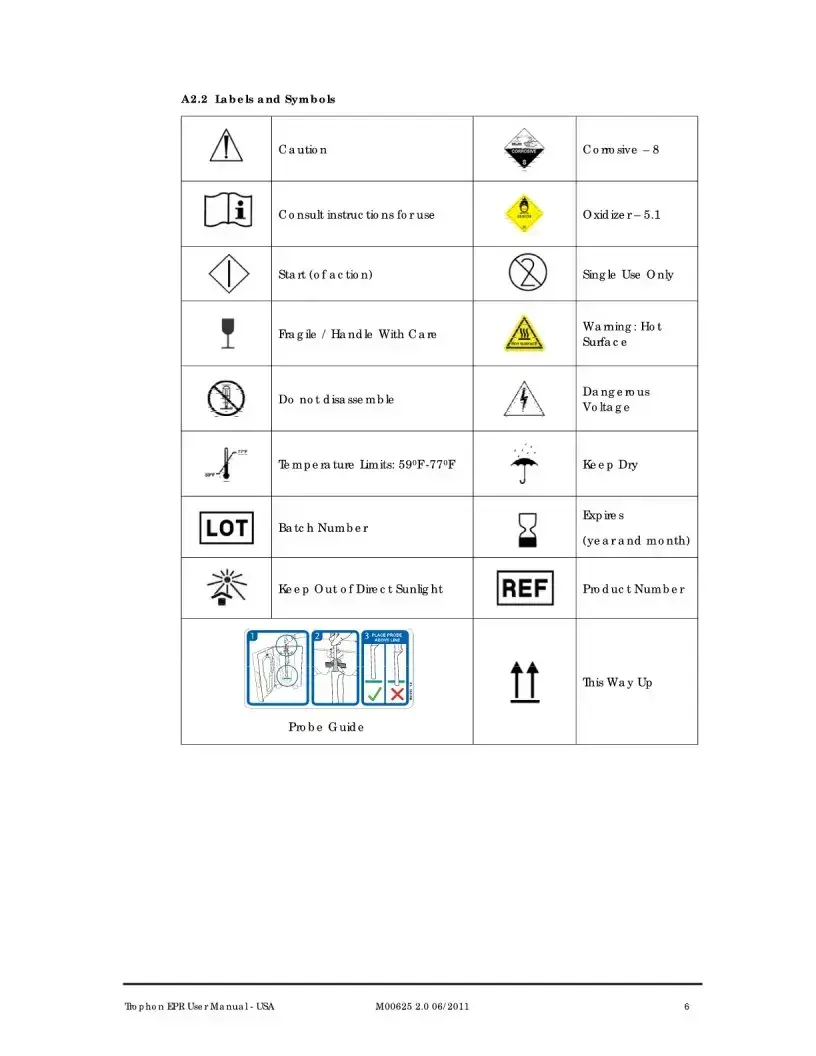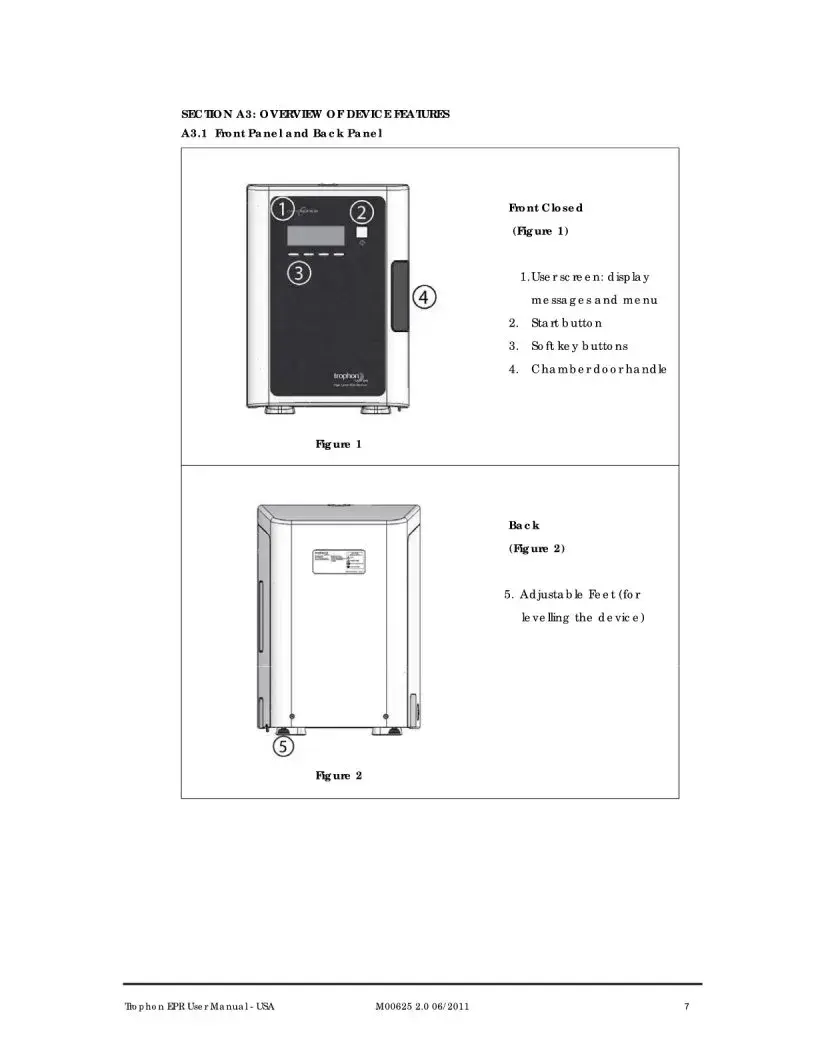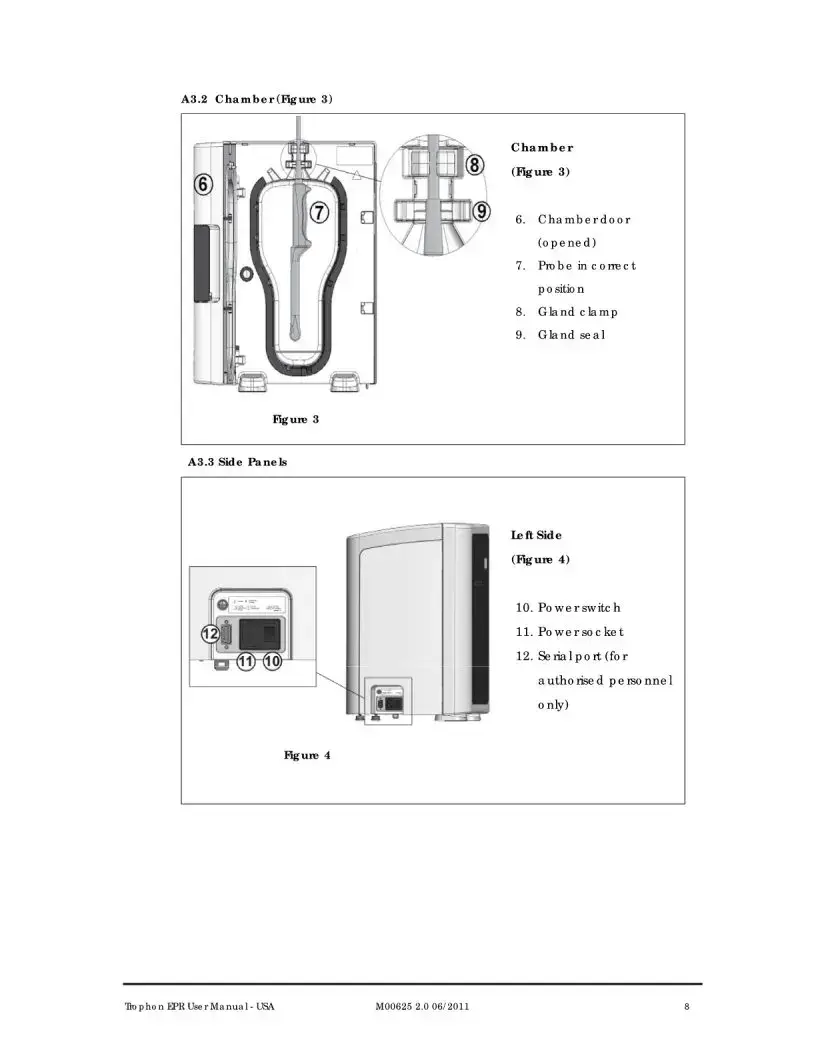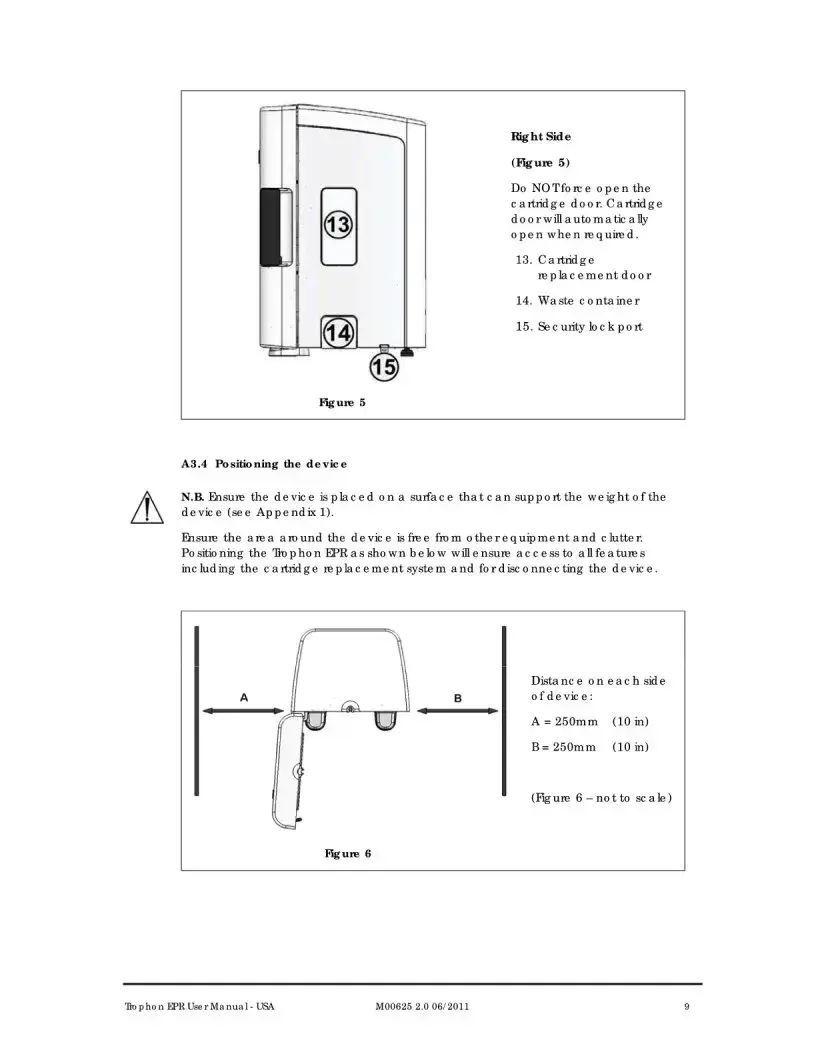What is the Trophon EPR and what is it used for?
The Trophon EPR is a medical device designed specifically to perform high-level disinfection of validated ultrasound probes. Its purpose is to ensure that these instruments are sanitized adequately before use in healthcare settings. The Trophon EPR is not intended for any other applications, such as reprocessing single-use devices or pre-cleaning ultrasound probes.
Who is responsible for training the users of the Trophon EPR?
It is the responsibility of the device owner to ensure that all users receive proper training according to the instructions provided in the Trophon EPR manual. Training should encompass safe operation, potential hazards related to the disinfectant, and appropriate safety procedures. This diligence helps maintain a safe environment for both patients and medical professionals.
Where can the Trophon EPR be used?
The Trophon EPR is intended for use in various healthcare environments, including hospitals, general practices, and specialized doctor's offices. These locations may have centralized cleaning rooms or operate without specific cleaning facilities. The device is meant to be used by healthcare professionals such as sonographers, nurses, general practitioners, radiographers, and specialists like cardiologists and obstetricians.
What precautions should be taken while using the Trophon EPR?
When using the Trophon EPR, it is crucial to adhere to the manufacturer's guidelines to ensure effective disinfection. Users should be aware of and follow all safety protocols associated with the disinfectant. Regular maintenance and proper loading of disinfectant cartridges are also necessary to achieve intended results. Understanding these precautions helps prevent incomplete or failed disinfection cycles.
What should be done in case of troubleshooting with the Trophon EPR?
If users encounter operational issues, the manual includes a troubleshooting section that provides guidance on addressing common problems. Users should consult this section for advice, or they can contact their customer service representative for assistance. It’s essential to resolve any issues promptly to maintain the device's efficacy and compliance with safety standards.
